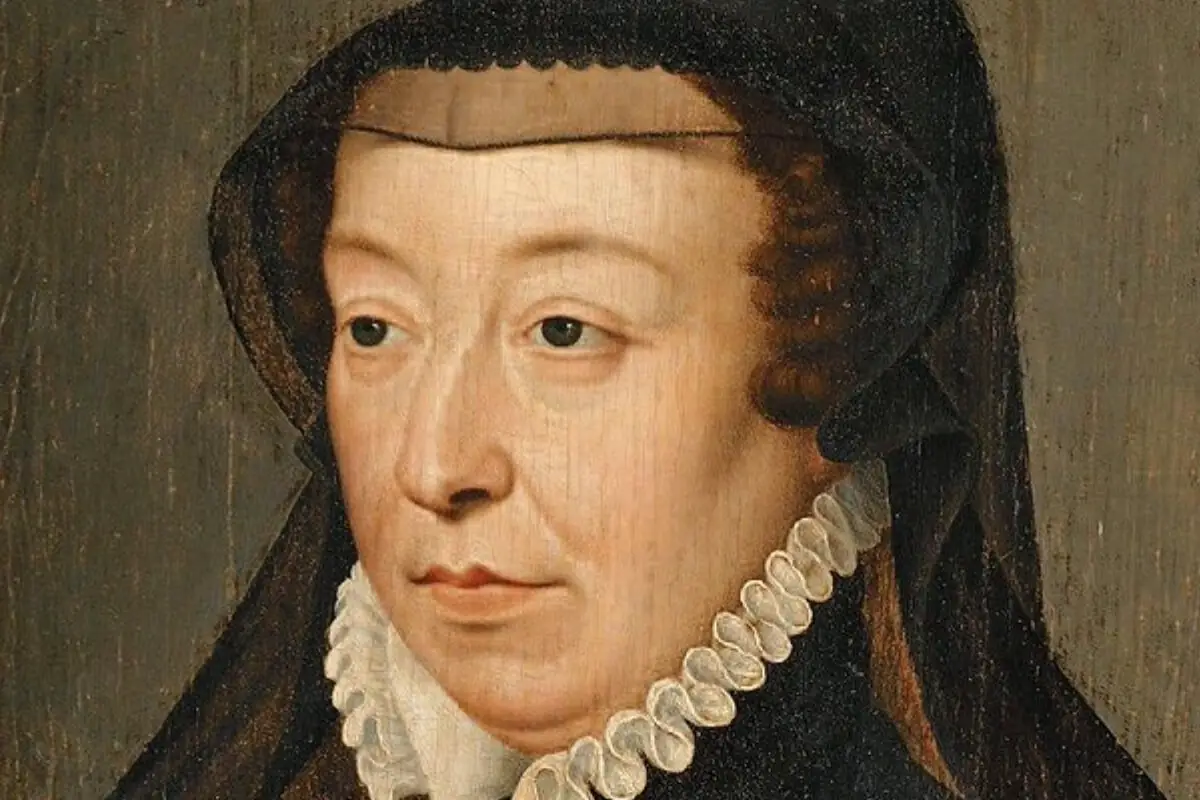In the lush tapestry of French Renaissance history, the vibrant threads of Catherine de Medici’s influence are inextricably woven. As the Queen of France and a woman of Florentine heritage, her ascendancy brought forth a unique fusion of Italian panache and French elegance, casting a long shadow of patronage across the arts and culture. This essay seeks to unravel the complex facets of Catherine’s embrace of the arts, examining the intersecting paths of political acumen and cultural patronage that defined her tenure.
As we venture through her commitment to artistic excellence, from the grandiose architectural wonders to the painstakingly curated art collections, the intricate dance of Catherine’s legacy begs a closer look, revealing how a queen’s refined taste sculpted the very essence of an era.
Table of Contents
- Catherine de Medici’s Patronage of the Arts
- Cultural and Artistic Innovations
- Catherine de Medici’s Art Collection and Its Significance
- Architectural Endeavors: The Building Projects of Catherine de Medici
- Legacy of Catherine de Medici in Contemporary Art and Culture
- Related Questions
Catherine de Medici’s Patronage of the Arts
The Majestic Influence of Catherine de Medici on Renaissance Art
Within the rich tapestry of art history, the Italian Renaissance stands out as a period of breathtaking human creativity and cultural flourishing. Catherine de Medici was at the forefront of this golden age, a woman whose profound influence on Renaissance art is as remarkable as the masterpieces it produced.
As an art patron of unmatched caliber, Catherine de Medici created an intellectual and cultural hub that rivaled the greatest courts of Europe. Born into the powerful Medici family of Florence, she carried the Medici passion for the arts to France when she married King Henry II. With her arrival, Catherine brought an air of Italian elegance that forever changed the French cultural landscape.
Her court became a magnet for artistic talent, attracting renowned painters, sculptors, and architects across Europe. Catherine understood the unspoken power of art, not just as a form of expression, but as a tool of political influence and social control. Through her patronage, she sought to enhance the prestige of the French monarchy and assert her clout in a court rife with intrigue.
One of Catherine’s significant contributions was her patronage of the arts, which was connected to the grand festivities at the French court. These elaborate events were spectacles of visual splendor, with temporary structures and triumphal arches designed by artists of the order of Giorgio Vasari. Architects and engineers such as Philibert de l’Orme took inspiration from her desire for innovation, blending Italian Renaissance styles with French traditions and setting architectural precedents that radiated throughout Europe.
Catherine was also instrumental in commissioning the Escorial and the Luxembourg Palace, which became cultural symbols of her authority and taste. These architectural feats showcased a blend of Italianate forms and French artistic sensibility, forming a bridge between two great centers of the Renaissance movement.
By fostering a cosmopolitan artistic community, Catherine de Medici stimulated an exchange of ideas and techniques that enriched the visual arts. She didn’t merely create an environment for art to prosper; she sowed the seeds for the Baroque era, which would later emerge and sweep the European art scene.
The artworks and buildings commissioned by Catherine de Medici reflect her legacy—a woman who understood that art was not only a reflection of beauty and power but also critical in shaping a nation’s identity. Her name is indelibly etched in the corridors of art history, not merely as a Queen of France but as a true Maecenas of the Renaissance whose vision and influence echo across time.
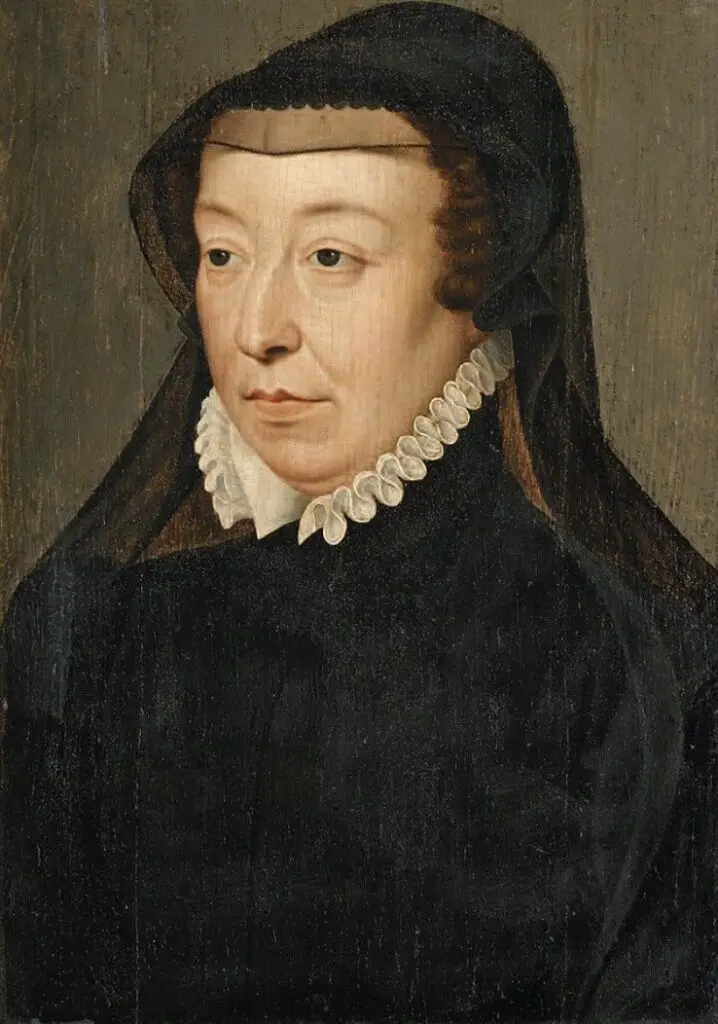
Cultural and Artistic Innovations
Catherine de Medici’s impact on the arts extends far beyond mere commissions; she was a pivotal force in the diffusion of the Renaissance spirit throughout France. Her flair for innovation and keen eye for detail revolutionized how festivities were celebrated at the French court. Staging lavish ballets and masquerades, Catherine cultivated the nascent art of dance, merging art with entertainment in a way that enchanted the nobility and left a permanent imprint on French cultural life.
Her enthusiasm for theater galvanized Parisian culture, turning it into a beacon of dramatic arts. By inviting troupes to perform at court and underwriting the construction of the first royal tennis court to serve as a makeshift theater, she laid the cornerstone for what would become the Comédie-Française. These were not mere diversions but calculated moves to cement her legacy and the monarchy’s prestige.
Catherine’s foresight in recognizing the decorative arts’ potential as an expression of power and refinement was transformative. Enamored with ceramics’ craftwork, she fostered an environment where the creation of exquisite porcelain could thrive. Such support injected vigor into France’s nascent luxury industries, predating the worldwide acclaim of places like Limoges.
In literature, Catherine’s courts were hubs for poets and scholars. Her protection of these figures helped stabilize French as a literary language, giving rise to a golden epoch of French literature. She created a sophisticated dialogue between the pen and the throne by rallying these wordsmiths under her banner.
Perhaps Catherine’s most significant legacy lies in her nurturing of French gastronomy. Recognizing that fine dining could be an art form, she introduced a symphony of Italian flavors and culinary techniques to France. Thanks to her, the refinement that France is renowned for in gastronomy owes a substantial debt to her culturally rich banquet tables, which emphasized flavor as much as presentation and innovation.
Catherine de Medici’s fingerprints on cultural and artistic innovation are everywhere, casting a long shadow on France’s heritage. Her alignment of the political with the artistic surely sets her apart as one of the most significant cultural orchestrators in history. Her influence, quietly woven into the fabric of French art and culture, continues to be felt in the vibrant cultural landscape of France today.
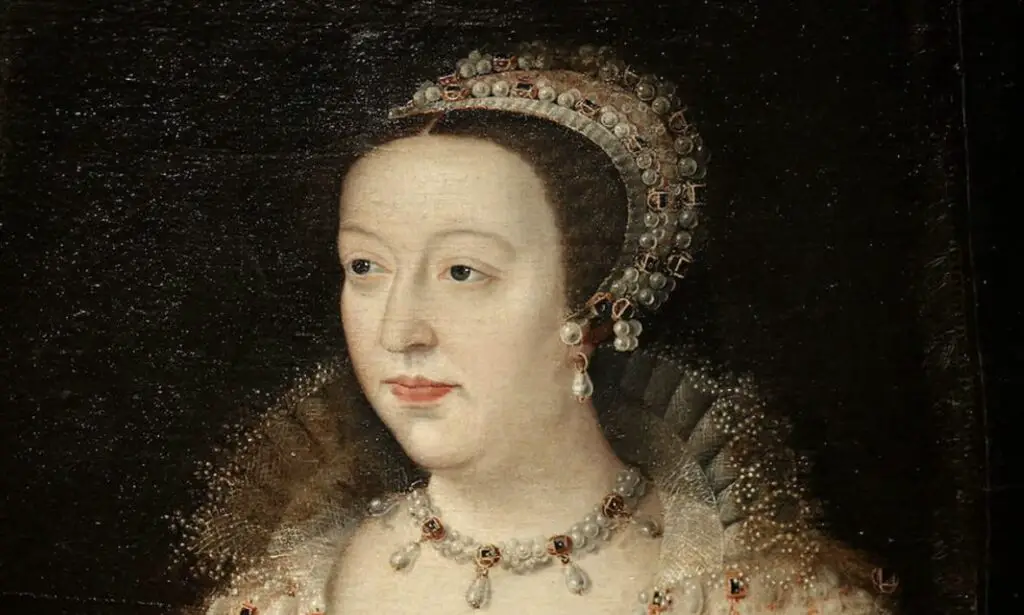
Catherine de Medici’s Art Collection and Its Significance
Beyond the Grandeur: Catherine de Medici’s Lasting Impact on Individual Artists and Artisanship
The remarkable Catherine de Medici’s vast influence continues beyond grand palaces and public artworks, deeply permeating into the lives of individual creators and the very craft of artisanship. With her keen eye and understanding of art’s nuances, Catherine was not merely a collector; she became a pivotal figure in the careers of many artists. It is through her support that names like Germain Pilon, the sculptor who transformed funerary art with innovative elegance, and Antoine Caron, whose paintings of court festivities capture a bygone era of regal splendor, have etched their marks in the annals of art history.
Exploring Catherine’s extensive art collection, one can see that her patronage went far beyond mere aesthetics. She strategically promoted various art forms to embellish her political persona and validate her regency. Every tapestry, portrait, and decorative object she commissioned is a thread to France’s golden tapestry of cultural heritage. Her assembly of such treasures reveals an ongoing dialogue between artist and patron—a symbiotic relationship that allowed for both the preservation of traditions and the inception of innovation.
Catherine’s eye for mastery also spurred the advancement of art education. At a time when personal instruction was the primary means of learning the craft, her support directly impacted skill development and the preservation of artistic knowledge. By offering patronage and protection, Catherine ensured that not only her commissioned artworks but also the techniques and training that created them would survive.
The jewels of Catherine’s collection were not meant to rest behind glass—they were designed to be worn, used, and integrated into the rhythms of noble life. By incorporating art into daily existence, she showcased its value and utility. Her cabinets of curiosities filled with cameos, medals, and other objets d’art were not solely repositories of wealth and privilege but also served to educate and inspire those who had the privilege to encounter them.
Furthermore, Catherine’s interactions with the guilds and insistence on the highest standards of craftsmanship catalyzed a movement of luxury goods that would define French artwork. The influence of her patronage of online tapestry-making alone set a path for areas like Gobelins Manufactory, which eventually rose to worldwide acclaim.
Finally, yet importantly, Catherine’s art collection tells the story of a woman who was a force in a man’s world, playing her part with adept intellect and shrewdness. Her patronage allows us to chart the movement from patron-client relationships dominating the arts to a world where artists sought and found increasing autonomy and public support.
Catherine de Medici’s collection remains a testament to her life. This life wove art into the narrative of statecraft and personal expression, leaving behind a legacy that continues to speak of a time when the arts flourished under the vision and influence of a formidable queen and patron.
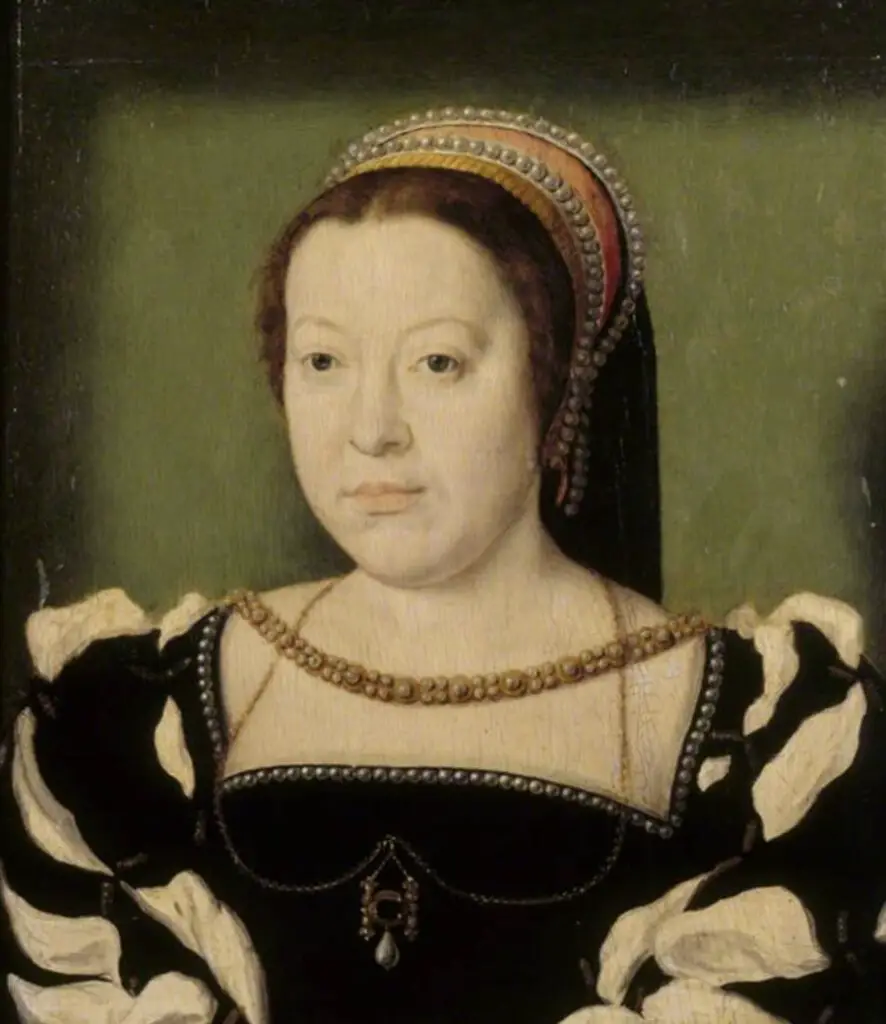
Architectural Endeavors: The Building Projects of Catherine de Medici
Catherine de Medici’s Architectural Legacy: Refashioning the French Landscape through Artistic Innovation and Grandeur
As the French landscape bloomed with architectural wonders, Catherine de Medici’s vision came to life, forever altering the fabric of French culture and its aesthetic contours. Her passion for grand designs and architectural marvels not only embellished cities but also reinvented the character of France’s structural narrative. The power and brilliance of Catherine’s architectural projects go beyond their visual grandeur; they represent a critical transformation in the French approach to constructing spaces that blend functionality with splendor.
One of the most striking achievements in Catherine’s patronage of architecture is the development of the Tuileries Garden, which today remains a testament to her foresight and love for meticulously crafted green spaces. These gardens did not just serve as a refuge for royalty; they symbolized the sophisticated taste and natural harmonization pursued during the Renaissance. By integrating Italianate geometric landscaping with an innate French flair for scale and proportion, Catherine set a standard for royal gardens that would echo through the ages.
Moreover, Catherine’s initiatives in urban planning immensely influenced the Paris we recognize today. Her patronage saw the birthing of new streets and the expansion of existing ones, promoting an air of openness and accessibility that contrasted with the cramped medieval quarters. Catherine’s influence in urban development gave Paris a sense of organized elegance. It inspired many future projects that aimed at creating a cityscape befitting the aspirations of a mighty nation.
The Pont Neuf, still as Paris’s oldest bridge, embodies Catherine’s impact on infrastructure beyond mere aesthetics. While the bridge’s elegant appearance draws deserved admiration, its innovation lies in serving a practical purpose. It eased the congestion of the city’s narrow medieval streets and demonstrated a thoughtful intersection of utility and artistry. Catherine realized the importance of facilitating the smooth flow of life in a burgeoning metropolis, and the bridge was as much a statement of her commitment to improving the lives of the Parisians as to leaving a permanent artistic imprint on the city.
Catherine’s architectural endeavors weren’t solely focused on aesthetics and public utility; they also provided impetus for advancements in engineering and construction techniques. Her projects employed some of the finest architects and engineers of the time, catalyzing an environment ripe for innovation and learning. This encouraged a hands-on approach to the sciences behind architecture, instilling a legacy of precision and skill that would ripple through generations of builders and designers.
When one examines Catherine’s influence on the French landscape, one can find an undisputed edification of culture through architecture. Her adoption and adaptation of different architectural styles heralded a versatile, experimental era when French identity was unafraid to absorb and redefine external influences to enrich its national aesthetic. In essence, Catherine proposed a built environment that posited the arts as the soul and sinew of society, integrally linked to every facet of civilization’s progress.
The architectural projects tied to Catherine de Medici do more than stand as historic monuments; they continue to shape the experiences of millions who walk the same paths, witness the same vistas, and live amidst the echoes of a Renaissance icon’s dream to weld form and purpose into a legacy of stone and soil. The grandeur of Catherine’s vision extends beyond her time into modernity, reminding us that architecture is the canvas of cultural memory and the scaffolding of a nation’s heritage.
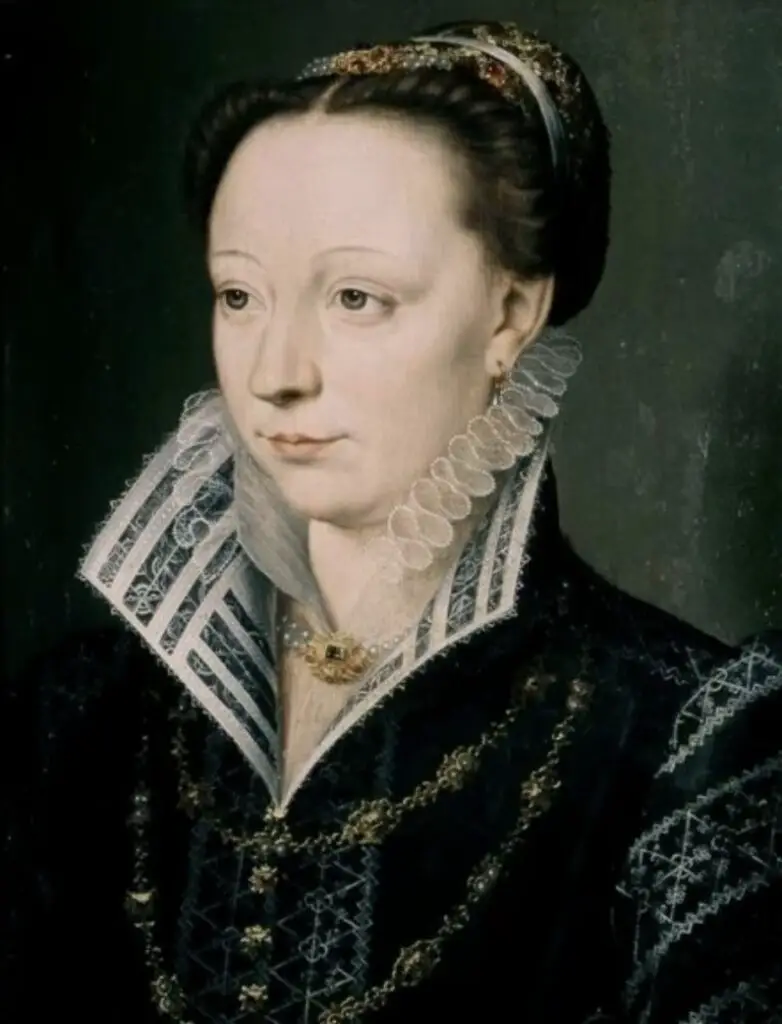
Legacy of Catherine de Medici in Contemporary Art and Culture
Catherine de Medici’s enduring influence resonates in the palatial wonders that dot the French landscape and the fabric of modern cultural appreciation. In today’s art scene, her strategic use of commissioned art as a political chess piece is echoed in state-sponsored art initiatives aiming to communicate a narrative or a national identity. Governments and cultural institutions worldwide study her model for inspiring national pride and unity through art.
Furthermore, the impact of her commissioned pieces still shapes curatorial choices and preservation efforts. Art historians and curators continue to unpick the threads of Catherine’s influence on European art, finding a blueprint for the role of a grand mecenas in her collections. Galleries and museums, particularly in France, often feature works that can trace their lineage to a Medici commission, connecting current aesthetics to the past.
Catherine’s example also paved the way for the celebration of women in the arts, inspiring female patrons and artists to assert their presence in a sphere long dominated by men. Her trailblazing path is studied and revered by feminists and historians, providing a historical precedent for decisive female leadership in the arts.
Additionally, Catherine’s support of artisanship and guilds set persistent industry standards. Today’s artists and craftsmen, consciously or not, work under the long shadow of excellence that she insisted upon. The luxury trades, especially those in France, such as tapestry, porcelain, and decorative crafts, owe a part of their global renown to the ambitious standards Catherine and her artisans set centuries ago.
Moreover, her introduction of Italian styles and culinary prowess remains a delectable aspect of French culture, highlighting the profound cultural exchange she facilitated. The intermingling of Italian and French cuisines enriches gastronomical experiences, revealing the unbroken continuity from Renaissance feasts to contemporary kitchens.
In essence, Catherine de Medici’s DNA is interwoven into the heart of cultural institutions and the very notion of art patronage. Her strategies and tastes still instruct the ambitions and aesthetic values cherished in the art world. As current societies grapple with the role of art in public life, they may look to Catherine’s visionary approaches for inspiration, crafting a bridge between Renaissance glory and today’s vibrant cultural tapestry.
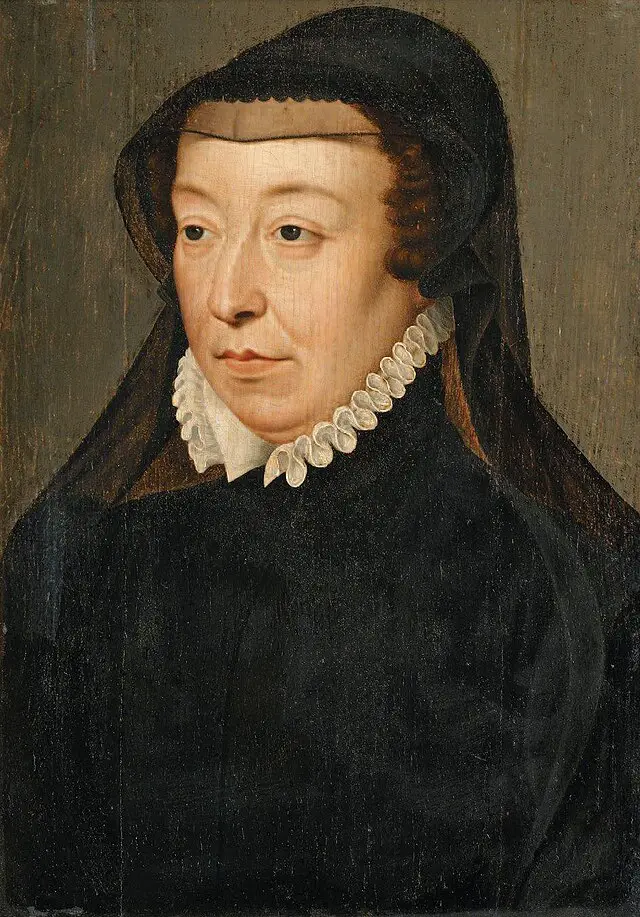
The tapestry of Catherine de Medici’s cultural legacy remains vibrant centuries after her reign. Through an integrated relationship with the arts, she inscribed her narrative into France’s very stone and canvas, which continues to capture the imagination and scholarly attention today.
Her patronage was more than an expression of personal taste; it was a strategic instrument of power and prestige. As we reflect on her contributions to the arts and architecture, we are reminded of the enduring power of cultural investment and its potential to reflect and shape the political landscapes from which it springs. With the indelible mark she left on architecture, visual arts, and performance, Catherine de Medici’s story invites us to consider the multifaceted role of art in history and its perpetual reverberation through time.
Anita Louise Art is dedicated to art education, great artists, and inspiring others to find and create their art. We love art that uplifts and inspires. #ArtToMakeYouSmile! #ArtToMakeYouHappy!
If you are interested to see any of my art, you can find out more by clicking here. If you are interested in what inspires me and my paintings, you can discover more by clicking here.
We have a free newsletter and would love you to be part of our community; you can subscribe to the newsletter by clicking here. If you have any questions, I would be happy to talk to you anytime. You can reach me, Anita, by clicking here.
Subscribe to our Anita Louise Art YouTube Channel filled with great videos and information by clicking here.
Related Questions
The Red Flowers, By Anita Louise Hummel
The Red Flowers by Anita Louise Hummel is a painting that was inspired by bright red flowers. I initially saw these flowers on a rain jacket that a designer wore while walking down the runway in New York City’s famous fashion week. I fell in love with the colors and look of the flowers, so I decided to paint them.
By clicking here, you can learn more by reading The Red Flowers, By Anita Louise Hummel.
Behind The Veil, By Anita Louise Hummel
Behind the Veil, by Anita Louise Hummel, is a painting that is a tribute to women wearing a veil or a burka. There is something mysterious and beautiful about a woman who wears a veil, especially when the woman has nicely manicured nails, golden jewels, and piercing blue eyes. Behind The Veil shows that beauty is more than just appearances and is under the skin; beauty can shine through a woman’s veil.
By clicking here, you can learn more by reading Behind The Veil, By Anita Louise Hummel.
Elder Koda, By Anita Louise Art, Vietnam Hanoi Mission Mascot
Elder Koda by Anita Louise Hummel is a painting of a purebred black poodle named Koda. Koda has lived the last three years in Hanoi, Vietnam, and has become the Hanoi Vietnam Mission mascot for The Church of Jesus Christ of Latter-day Saints.
By clicking here, you can learn more by reading Elder Koda, By Anita Louise Art, Vietnam Hanoi Mission Mascot.

